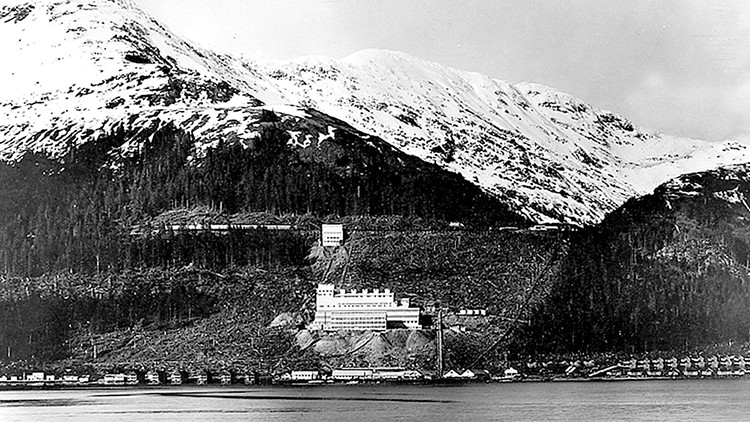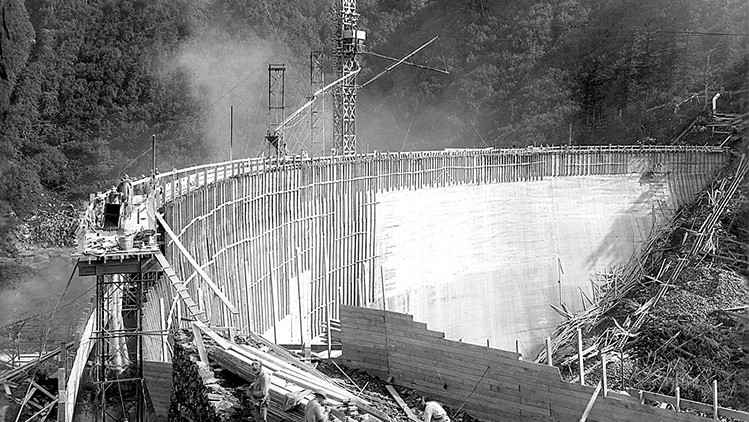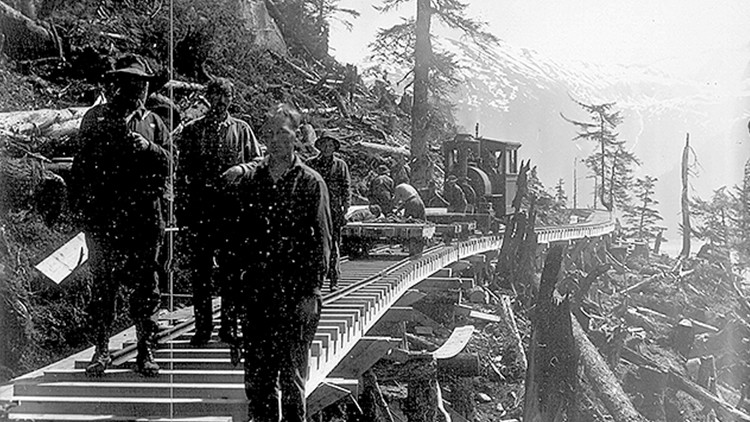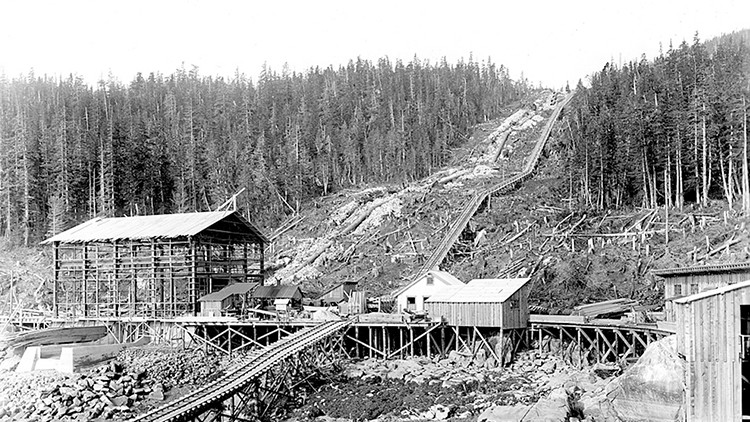
Alaska Gastineau Mill
By 1911 Bart Thane had acquired control of the Perseverance Mine, which had a 100-stamp mill, in Silver Bow Basin. The mine ran seasonally since the snow was too deep in the winter to continue to operate and the hydro power running the mill was not available in the winter. Thane developed a plan to expand the Perseverance Mine and operate it on a much larger scale. His plan included three main parts: 1) a 10,000 foot-long tunnel connecting the Perseverance Mine to Sheep Creek Valley; 2) a new mill near Sheep Creek, not far from tidewater, that could be operated year-round and process 6,000 tons of ore a day; and 3) a year-round source of hydroelectric power at Salmon Creek which could produce 6,000 horsepower. The Gastineau engineers went to work and by 1915 the tunnel, hydro plant and mill were in operation.

Salmon Creek Dam
But they soon discovered that the mill was so efficient that with additional equipment it could process 12,000 tons of ore per day. To do this they would need another 6,000 horsepower of electric power. Thane directed his chief engineer, Harry Wollenberg, who had just finished construction of the Salmon Creek Dam, to search for another hydroelectric project. Wollenberg soon began investigating Annex Lake and determined that it had the potential to provide the needed energy. Construction began on the Annex Creek project in April 1915, power was on line in December 1915, and the lake tap was completed in February 1916. With this added power, the mill began to raise production.

Crews Construct the Annex Creek Project (June 1915)
Processing 12,000 tons of ore per day, the Gastineau Mill was the highest capacity mill in the world at the time. Mining engineers originally expected the value of the gold in the mine to be $1.50 per ton of ore. Their goal was to be able to mine and mill the ore for 75 cents per ton and have a very profitable operation. They met their goal for production costs, which varied from 68 to 77 cents per ton. Unfortunately the assay value of the ore actually mined was far lower than expected, averaging around $1 per ton with recovery of 84 cents per ton. At this rate the Gastineau Mine couldn't cover its costs. The mine shut down just six years later in 1921. During its operating life, from 1916 through 1920, the Gastineau mine produced 471,000 ounces of gold valued at $9.7 million at the time.

Annex Creek Power House under constructions (September 1915)
The AJ Mining Company bought the assets of the Alaska Gastineau Mining Company, including both the Salmon Creek and Annex Creek Hydro Projects, in 1934, and used them to power the AJ Mill near downtown Juneau. They also mined the Perseverance ore body. After the AJ Mine closed in 1944, they continued to operate the hydro plants and sell energy to the local electric utility, Alaska Electric Light and Power (AEL&P), to re-sell to their customers. In 1973, AEL&P bought the assets of the AJ Mine and acquired the Salmon Creek and Annex Creek Projects. AEL&P continues to run both projects today.